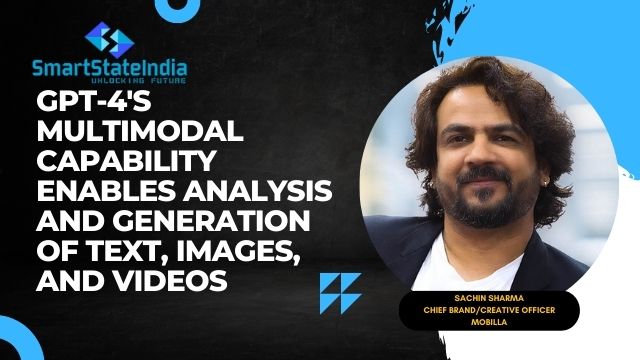OpenAI has recently unveiled GPT-4, the fourth iteration of its large language model (LLM), designed to enhance machines’ ability to comprehend natural language and produce coherent text. With 1 trillion parameters and the ability to access images and videos from the web, GPT-4 takes LLMs to a whole new level. As a result, it is now a multimodal model that can analyse and generate different types of data, such as text, images, videos, audio, and code.
 GPT-4 is a language model that offers several significant advantages over its predecessors. Some of its most notable capabilities include:
GPT-4 is a language model that offers several significant advantages over its predecessors. Some of its most notable capabilities include:
- Greater accuracy in solving difficult problems, thanks to its broader general knowledge and problem-solving abilities
- More creative and collaborative than ever before, with the ability to generate, edit, and iterate on creative and technical writing tasks
- Acceptance of images as inputs, allowing it to generate captions, classifications, and analyses
- Ability to handle over 25,000 words of text, making it suitable for long-form content creation, extended conversations, and document analysis
- Improved safety and alignment, with a 82% reduction in disallowed content and 40% increase in factual responses compared to its predecessor, GPT-3.5
- Outperformance of existing language models in multiple languages, including low-resource ones like Latvian and Welsh.
As an AI evangelist and creative professional, I am excited to see the advancements made by GPT-4 in natural language processing and image recognition. Its ability to solve complex problems, collaborate on creative tasks, and handle large amounts of text make it an invaluable tool for professionals in a range of industries.
GPT-4 has the ability to process prompts that include both text and images, allowing users to specify various language and vision tasks. The model can generate text outputs based on inputs that contain interlaced text and images, and its performance is consistent across a range of domains, including documents with text and visuals such as photographs, diagrams, or screenshots. An example of GPT-4’s visual input capabilities can be found in the image below. The standard test-time techniques developed for language models, such as few-shot prompting and chain-of-thought, are equally effective when using both images and text. The provided prompt showcases GPT-4’s ability to answer questions about an image with multiple panels. As GPT-4 continues to evolve, more information and research will be released regarding its capabilities.




1 comment
A very well-written piece! It provided valuable insights. What are your thoughts? Check out my profile for more discussions!